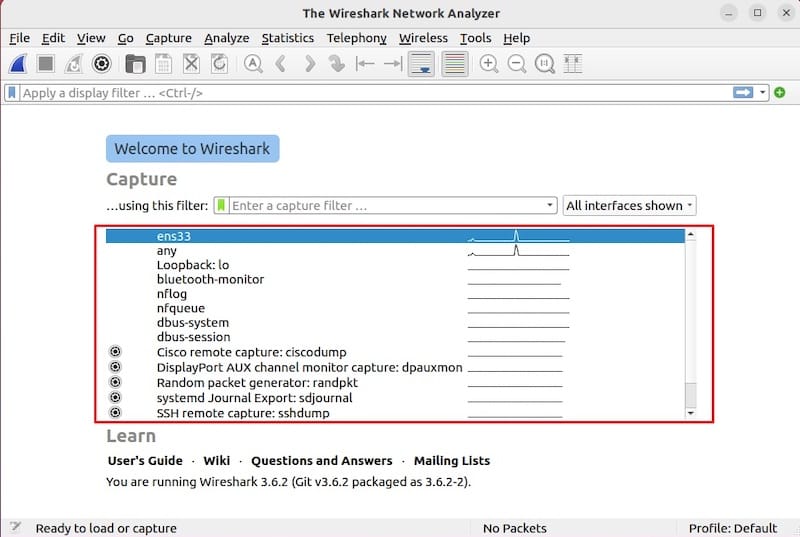How To Install Wireshark on Fedora 41

Wireshark is a powerful network protocol analyzer that allows users to capture and interactively browse the traffic running on a computer network. It is widely used by network administrators, security professionals, and educators to troubleshoot network issues, analyze packet data, and ensure secure communications. In this article, we will provide a comprehensive guide on how to install Wireshark on Fedora 41, ensuring that you have all the necessary steps, tips, and resources to get started effectively.
Understanding Wireshark
What is Wireshark?
Wireshark is an open-source tool that captures network packets in real-time and presents them in a user-friendly interface. It supports hundreds of protocols and provides detailed information about each packet, including source and destination addresses, protocol types, and payload data. This makes it an invaluable tool for diagnosing network problems, monitoring network traffic, and conducting security assessments.
Why Use Wireshark on Fedora?
Fedora is a popular Linux distribution known for its cutting-edge features and strong community support. Installing Wireshark on Fedora allows users to leverage its robust package management system (DNF) for easy installation and updates. Additionally, Fedora’s focus on security and performance makes it an excellent choice for running network analysis tools like Wireshark.
Prerequisites for Installation
System Requirements
Before installing Wireshark on Fedora 41, ensure that your system meets the following minimum hardware specifications:
- Processor: 1 GHz or faster
- RAM: 2 GB or more (4 GB recommended)
- Disk Space: At least 500 MB free space
Software Requirements
Wireshark requires certain software packages to function correctly. Ensure that you have the DNF package manager installed (it comes pre-installed with Fedora) and that your system is updated.
User Permissions
You will need root or sudo access to install Wireshark and configure necessary permissions for capturing packets. Make sure you have administrative rights on your Fedora system.
Step-by-Step Installation Guide
Step 1: Update Your System
The first step in installing Wireshark is to ensure that your system packages are up-to-date. Open a terminal window and run the following command:
sudo dnf update -yThis command will update all installed packages to their latest versions, ensuring compatibility with Wireshark.
Step 2: Install Wireshark
Once your system is updated, you can proceed with the installation of Wireshark. In the terminal, execute the following command:
sudo dnf install wireshark-qt -yThis command installs the graphical user interface version of Wireshark along with its dependencies. The installation process may take a few minutes depending on your internet speed and system performance.
Step 3: Configure Permissions for Non-root Users
To use Wireshark effectively without running it as the root user (which can pose security risks), you need to configure user permissions properly.
Creating the Wireshark Group
During installation, a group named “wireshark” is created automatically. This group allows users to capture packets without needing root privileges.
Adding User to the Group
Add your user account to the wireshark group by executing the following command:
sudo usermod -aG wireshark [username]Replace [username] with your actual username. After running this command, you will need to log out and log back in for the changes to take effect.
Setting Capabilities for Dumpcap
The dumpcap utility is responsible for capturing packets. You need to set specific capabilities so that non-root users can run it without elevated privileges. Execute the following command:
sudo setcap cap_net_raw,cap_net_admin=eip /usr/bin/dumpcapThis command grants the necessary permissions to dumpcap, allowing it to capture packets from any interface without needing root access.
Starting Wireshark
You can now start Wireshark either from the terminal or through your desktop environment’s application menu. To launch it from the terminal, simply type:
wifiresharkThe first time you run Wireshark, you may be prompted to select which network interfaces you want to monitor. Choose the appropriate interface (for example, eth0 for wired connections or wlan0 for wireless) based on your network setup.

Troubleshooting Common Issues
Installation Problems
If you encounter issues during installation, consider the following troubleshooting tips:
- No package found: Ensure that your DNF repositories are enabled and up-to-date. You can check available repositories using
distro-sync --refresh. - Error messages during installation: Review any error messages carefully; they often provide clues about missing dependencies or conflicts.
- No internet connection: Verify that your system is connected to the internet before attempting to install packages.
Permission Issues
If you experience permission issues when trying to capture packets after installation:
- User not in wireshark group: Double-check that your user has been added correctly by running
groups [username]. - No capabilities set: Ensure that you executed the setcap command correctly without errors.
- Error capturing packets: Restart your session or reboot your system if changes do not take effect immediately.
Best Practices for Using Wireshark
When using Wireshark, it’s essential to follow best practices to ensure ethical usage and effective analysis:
- Avoid capturing sensitive data: Always respect privacy laws and organizational policies regarding data capture.
- Select appropriate filters: Use display filters in Wireshark to narrow down captured traffic, making analysis easier and more efficient.
- Keen understanding of protocols: Familiarize yourself with common network protocols (e.g., TCP/IP) to interpret captured data accurately.
- Keen understanding of local laws: Be aware of legal implications related to network monitoring in your region or organization.
Congratulations! You have successfully installed Wireshark. Thanks for using this tutorial for installing the Wireshark network analyzer on Fedora 41 system. For additional help or useful information, we recommend you check the official Wireshark website.